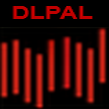New related paper to #20 – Volatility Risk Premium Effect
"This paper provides downside risk premium estimates using SPX options. We form downside and upside risk factor mimicking portfolios using SPX options and measure their average excess returns. The evidence shows that most of the market risk premium comes from the downside. In addition, the downside risk premium is mainly attached to the tail risk, the risk that the market portfolio has rarely observed bad returns. In contrast, investors demand little premium for holding a downside factor mimicking portfolio that is exposed to moderate, but most commonly observed, levels of market losses. We also use the simulation method to verify our �findings based on historical returns.
Measuring downside risk premiums from the stock market using Fama-MacBeth regressions produces mixed results. When the betas are estimated using daily stock returns and 1-year windows, and the dependent variable is the stock return over the same period when the beta is measured, we obtain an average downside risk premium that is comparable to the option-implied premium, which seems to suggest that the downside risk premium is priced consistently in the two markets. However, downside risk premiums measured from the stock market also show some disconcerting features. First, although the stock market downside risk premium seems to be correct on average, its time series is highly volatile and pro-cyclical, which is inconsistent with most �finance theories. Second, when the beta is measured using monthly stock returns in a 5-year window, and the dependent variable is the stock return over the same 5 years, the downside risk premium drops signi�cantly and even disappears in the recent subsample, when the option prices clearly show that the premium is still high.
Second, when returns as dependent variables are measured in a period following the one when betas are estimated, the downside risk premium largely disappears. We reject the hypothesis that this change is due to the lack of predictability of future downside betas by showing that such predictability is fairly strong. Overall, we do not fi�nd robust evidence that downside risks are priced in the stock market in a similar way as in the options market. The contemporaneous correlation between beta estimates and stock returns is likely due to reasons unrelated to downside risk premiums."
Are you looking for more strategies to read about? Check http://quantpedia.com/Screener
Do you want to see performance of trading systems we described? Check http://quantpedia.com/Chart/Performance
Do you want to know more about us? Check http://quantpedia.com/Home/About
Share onLinkedInTwitterFacebookRefer to a friend
























